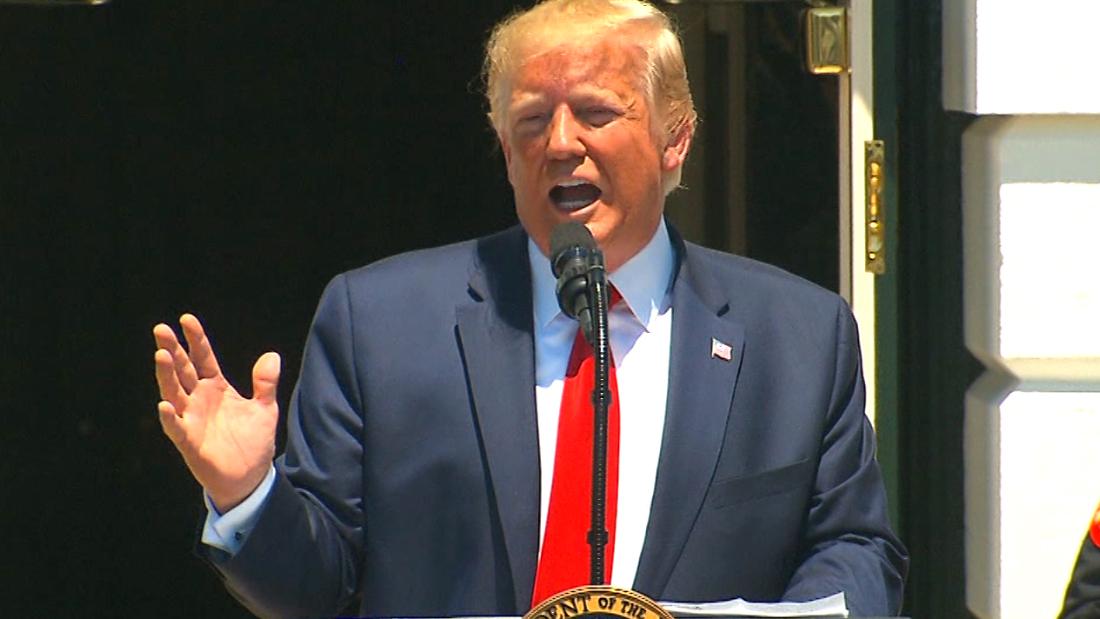Explaining how he decided to cancel a possible attack on Iran,
he wrote, “We were cocked & loaded to retaliate last night on 3 different sights when I asked, how many will die. 150 people, sir, was the answer from a General. 10 minutes before the strike I stopped it…”
This was all so Hollywood that I would have been skeptical regardless of Trump’s choice of words. Because he included one particular word, though, I was almost certain the story was inaccurate in some way.
Lots of people do call Trump “sir,” of course. But the word seems to pop into his head more frequently when he is inventing or exaggerating a conversation than when he is faithfully relaying one. A “sir” is a flashing red light that he is speaking from his imagination rather than his memory.
In poker parlance, it’s a tell.
Trump has told false “sir” stories on all manner of subjects:
health care, the
Middle East, the
courts,
unions and — just last week — both
tariffs and
social media. But no genre of Trump story is more reliably sir-heavy than his collection of
suspiciously similar tales about macho men breaking into tears of gratitude in his presence.
In a speech in January, Trump painted a colorful picture of the “strong, tough” farmers, ranchers and builders who stood behind him in 2017 as he signed an executive order to rescind a water regulation. “Half of them were crying,”
he told the American Farm Bureau Federation, especially one man so tough he might not have cried even “when he was a baby.”
“He was crying,” Trump repeated. “He said, ‘Sir, you gave me back my life. You gave me back my property.'”
Touching if true. Absolutely not true.
The signing ceremony happened on camera. The video, still available on the White House’s YouTube channel,
shows that nobody standing behind Trump was crying.
The “sir” is frequently attributed to a person impressed, surprised or outwitted by Trump.
At a rally in October, for example, Trump said this about the Veterans Choice health program: “I said, ‘I have the greatest idea. We’re going to do this. If a veteran has to wait, we’re going to send them to a private doctor. We’ll pay the bill.’ What a genius — I said, I said, how good is that? They said, ‘Sir, we’ve been trying to get it passed for 44 years.'”
If there were a genius involved, it was a Trump nemesis — or a coalition of them. The Veterans Choice program was
passed in 2014, in a bipartisan congressional effort led by Senators John McCain, R-Arizona, and Bernie Sanders, I-Vermont, and
signed into law by President Barack Obama. The bill Trump
signed in 2018, the VA MISSION Act, modified and expanded the Choice program, but it did not create it.
I’ve been writing about Trump’s “sir” fabrications
for a year now. As the Twitter mockery of these stories has increased, Trump has not slowed down one bit. He regaled audiences with tales about supposed “sir” moments on consecutive days last week.
In a speech about social media on Thursday, Trump claimed that people have approached him to say they want to follow him on Twitter but have been prevented from doing so: “I have people come up to me: ‘Sir, we want to follow you. They don’t let us on.'”
We don’t know what someone might have told Trump in a private conversation,
but there is no evidence that Twitter is blocking people from following him.
In his trade speech in Milwaukee on Friday, Trump offered an account of how he decided to give $16 billion in aid to farmers hurt by his tariff battle with China.
“I went to (Agriculture Secretary) Sonny Perdue,” Trump said, “and I said, ‘Sonny, how much has China spent, let’s say, in the — in just about the biggest year?’ He said, ’16 billion dollars, sir.’ I said, ‘Here’s what I’m doing. I’m giving our farmers $16 billion out of the tariffs.'”
As you might have expected by now, Trump’s figure was not even close to correct.
While Trump did announce a $16 billion aid package in May, China
spent nearly twice that — $29.6 billion — in its biggest year for purchases of American farm products, according to Department of Agriculture figures.
My “sir” suspicions didn’t betray me on Trump’s Iran tweet last month. Later in the day he posted it,
CNN reported that a White House official said Trump was given a casualty estimate much earlier than “10 minutes before the strike.”
The New York Times reported that an administration official said the “150 people” figure was given to Trump by White House lawyers, not in a cinematic exchange with a general.
The specific kind of wrongness changes by the story. The incessant inaccuracy does not, no sir.

